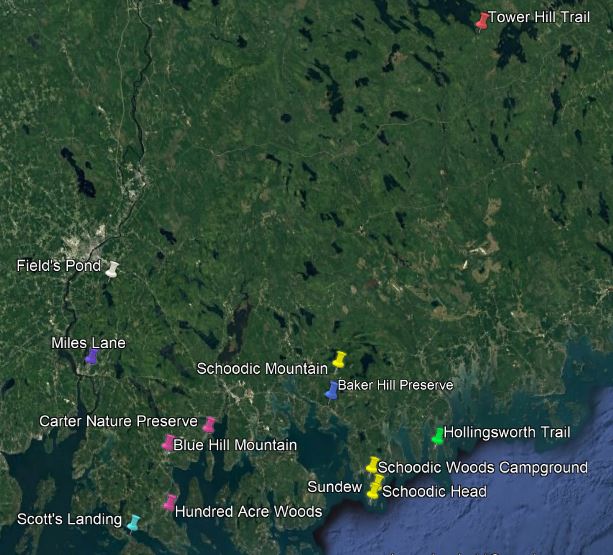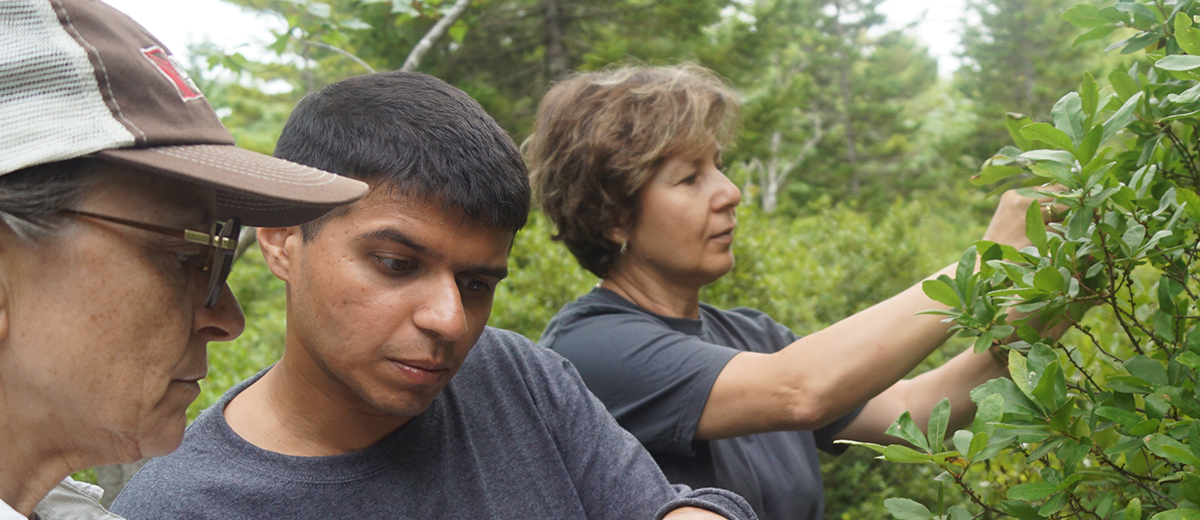The Downeast Phenology Trail was created to help advance scientific research in Acadia and throughout all of Downeast Maine all while providing the opportunity to engage citizen scientists in the data collection process.
Spread over 9 conservation areas located throughout Downeast Maine, the trail provides visitors with the opportunity to contribute data to address these important research questions. The project uses Nature’s Notebook, iNaturalist, and eBird applications.
What is Phenology?
Phenology, or nature’s calendar, is the study of plant and animal life cycle events. It includes tracking the timing of flowering and fruiting plants, emergence of insects, and bird migrations.
Why is phenology important to us?
Millions of songbirds migrate south every fall along the Atlantic coastline. As they travel the long distances needed to reach their southern destinations they need stopover sites where they can refuel on fruits and insects.
Temperatures are increasing, potentially altering the timing of fruits ripening, insects emerging, and birds migrating. Is climate change creating a “mismatch” between fall migrating birds and their food sources like fruits and insects? Will there be any fruits or insects left for the birds when they fly through our region?
The lead scientist for the Downeast Phenology Trail is Richard Feldman, of Schoodic Institute and the Yucatan Center for Scientific Research in Merida, Mexico. He studies bird migration and, in particular, how it is that every fall, birds are able to leave the forests of the United States and Canada and make it all the way south to Mexico and Central and South America. He is interested in “stopover” events, when migrating birds break-up their journey by landing and eating insects and fruits to gain energy and strength for their next flight. Because their journey is so long and goes through so many different landscapes, they have to be flexible in how and what they eat. The changing climate is affecting the timing of bird migration and the foods available during stopovers. Will birds be able to adapt to these new foods and still be able to migrate and help plants grow (by eating and transporting seeds)? Tracking tagged birds helps him see whether birds spend a longer time on stopover when fruit is scarcer, and by examining the feces of birds he can know what kind of fruit they are eating and how it changes during migration. Feldman uses information from the Downeast Phenology Trail and others like it to know how the foods that birds need are changing: what kinds of insects and fruits can be eaten, when they can be eaten, and how much can be eaten.
Partners
Working with the National Phenology Network Nature’s Notebook, along with Acadia National Park, Blue Hill Heritage Trust, Downeast Lakes Land Trust, Fields Pond Audubon Center, Frenchman Bay Conservancy, Island Heritage Trust, Great Pond Mountain Conservation Trust, and Petit Manan National Wildlife Refuge, Schoodic Institute established the Downeast Phenology Trail.
Downeast Phenology Trail Sites

